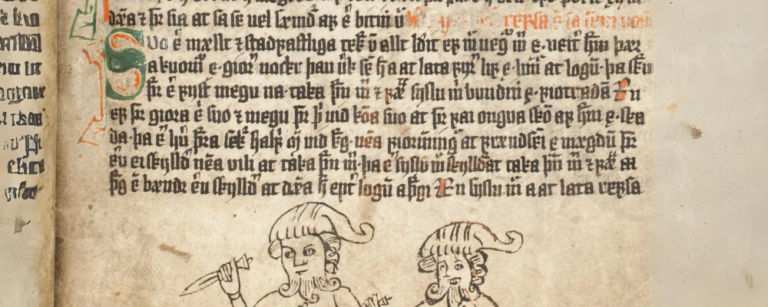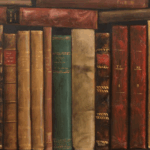When reading Norse sagas and other types of Norse literature, one important literary motif to understand is kennings.
Kennings are not just common in Old Norse literature, but also Old Germanic texts and Old English poetry.
A kenning is a figurative phrase that replaces a common noun.
For example, a Skaldic poet might refer to a battle as “the noise of shield rims” or to a warrior as the “feeder of wolves”, since wolves feast on the bodies of the dead after battle.
In addition to adding interest to poems and texts, kennings are important to use today, as they can reveal connections that the Vikings made between things that we would not otherwise know.
For example, the many kennings that exist for the gods often seem to point to stories from Norse mythology that seem to have been lost.
We know quite a lot about Old Norse kennings thanks to a treatise on the subject written by the Icelandic historian Snorri Sturluson.
Let’s look at what his text reveals, and at some of the most intriguing kennings that survive for referring to some of the Norse gods.
Snorri Sturluson on Kennings
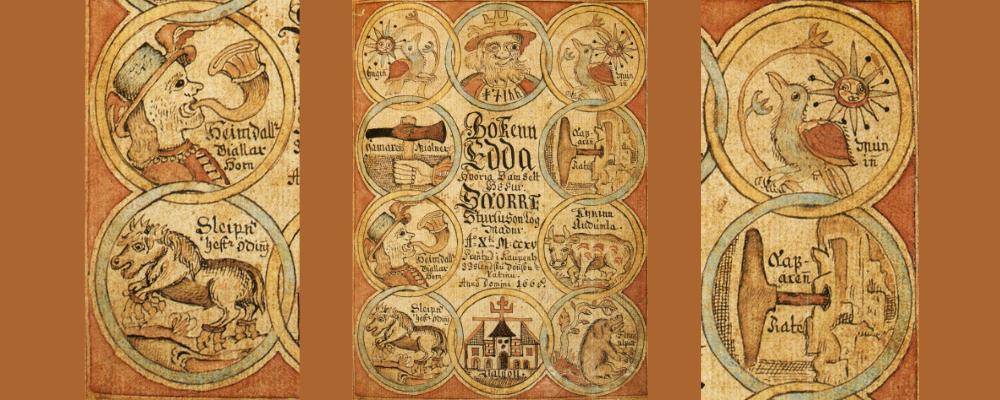
This text retells many myths from Norse mythology and is our fullest source of the stories about the gods.
The book also contains a section called the Skaldskaparmal, which provides a list of kennings and heiti (which are simple synonyms) used in Norse poetry. It also contains a discussion of the composition of traditional skaldic poetry.
The first use of the noun “kenning” actually comes from this text. The word can also mean emotion, feeling, knowledge or teaching in Old Icelandic.
But Sturluson says that kenning is one of the categories of language used in poetry to vary the language and increase the vocabulary.
He gives many different names for subcategories of kennings, though they are not always consistent across his text.
For example, he says that a sannkenning, which compounds more than one poetic phrase to refer to the noun and “beautify and fill out the language”.
While he says that a vidkenningar is specifically used in place of a man’s name. But these can all be seen under the umbrella of kennings.
Kennings for Odin
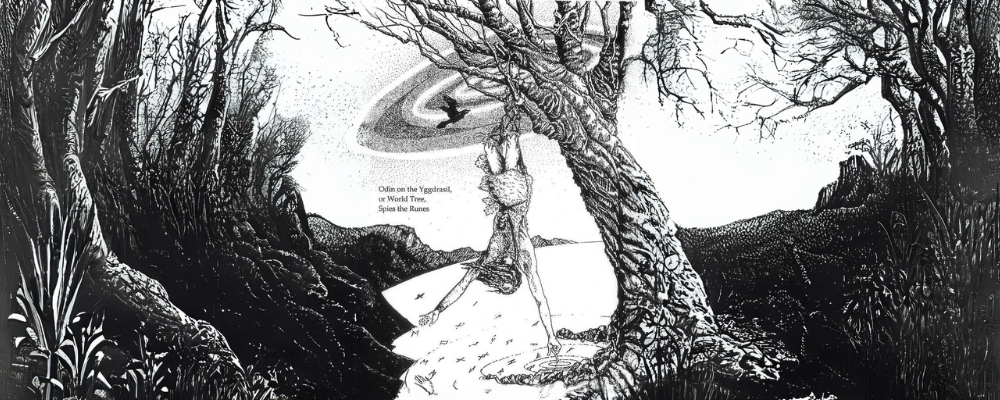
The burden of the gallows. This refers to when Odin hung himself from Yggdrasil for nine days and nine nights while pierced by his own spear to learn the secrets of the runes.
This was considered a king of gallows, and the Vikings would sometimes execute enemies in this way as a sacrifice to Odin.
The spear-Tyr. This is an interesting kenning because it refers to another Norse god of war, Tyr.
While Tyr was significantly less important than Odin in the Viking age, multiple kennings for Odin that refer to him as Tyr have led scholars to suggest that Tyr was originally the more important god of war, usurped by Odin.
This would explain why he is referred to as a Tyr.
The mention of a spear is a reference to Gungnir, the enchanted spear that Odin was believed to wield. It is worth knowing that the spear was the most common weapon wielded by Viking warriors and therefore intimately connected with war.
Another kenning for Odin is the swinger of Gungnir.
The raven god. Ravens were sacred to Odin, and this kenning references that.
He had two raven familiars, Huginn (thought) and Muninn (memory), which flew out into the world each day and told the god everything they saw.
It was also considered a good omen to see ravens circling the battlefield as it meant that Odin was present to choose the bravest fallen warriors to take to Valhalla.
The one-eyed embrace-occupier of Frigg. This kenning refers to multiple elements of Norse mythology. First, Odin had only one eye because he plucked it out as a sacrifice to drink from the well of wisdom, where he installed Mimir.
Odin is also sometimes called by the kenning Mimir’s Friend. He was also married to the goddess Frigg. Odin is also sometimes referred to by the straightforward kennings the father of Balder, the son of Bestla, the son of Bor, the heir of Buri, and the brother of Vili, referring to Odin’s family members revealed in the creation myth.
Balder is referred to by the kenning the fallen son of the kin-wise raven tester, the raven tester, of course, being Odin.
The mind-swift lord of Hlidskjalf. Calling Odin mind-swift is probably a reference to the fact that he was considered the god of wisdom.
Hildskjalf is the name of a throne belonging to Odin in Asgard where he could sit and see everything happening across the Norse cosmos.
The friend of slain men. There are many kennings that refer to Odin as the god of war such as the god of battle and the god of the corpse ground.
Referring to him as the friend of slain men is a reference to Valhalla, as Odin selected the bravest dead warriors to live in his hall, Valhalla.
He is also referred to as the chooser of the slain.
Kennings for Thor
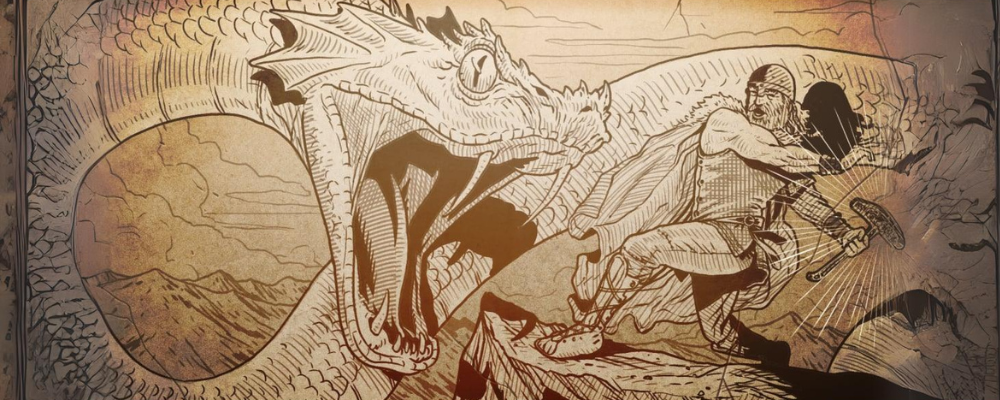
It is interesting that while Odin is referred to by his relationship to many family members, including his son Balder no examples survive that refer to Odin as the father of Thor, the god of thunder.
The son of mankind’s father. This kenning refers to Thor as the son of Odin, who was the creator of mankind and therefore the father of man.
There are also kennings that refer to Thor in his role as a father, including the deep-minded, might, reliable, victory-blessed father of Magni.
He is also The father of Thrud, the confidant of Sif (his wife), and the ruler of Bilskirnir, his hall in Asgard.
He is the son of Jord, the giantess that personifies the earth, and the glorious stepfather of Ullr, suggesting that Sif is the mother of Ullr, a fact not known from elsewhere.
The enemy of the giants. Thor was considered the strongest of the Aesir gods and thus was charged with protecting Asgard, the realm of the gods, and Midgard, the realm created for mankind, from the giants.
It is the fortified “gard” worlds and not the chaotic “heim” worlds that are under his protection.
Because of this role, it is Thor who as the most contact with the giants in the surviving Norse stories. He is also called the terror of giants and the life-destroyer of the evil-causing troop of Beli (the giants).
The skull-splitter of Hrungnir. Hrungnir was a giant who was invited to a feast at Asgard but then made a nuisance of himself, so the gods called on Thor to kill him. The two met in battle and Thor split his head open with his hammer.
The user of goats. This refers to the fact that Thor rode in a chariot pulled by two goats (made famous by Marvel’s Thor: Love and Thunder).
He is also the user of the strength-belt, which refers to a special belt that Thor had to double his strength.
The serpent harmer. This refers to the fact that Thor is destined to fight to the death with the serpent Jormungandr at Ragnarok.
He is also the action-liberal, rage-familiar, misfortune-destroyer of Loki, referring to the fact that it is Thor who will track down Loki and bring him to justice for his role in the death of Balder.
Kennings for the Goddesses
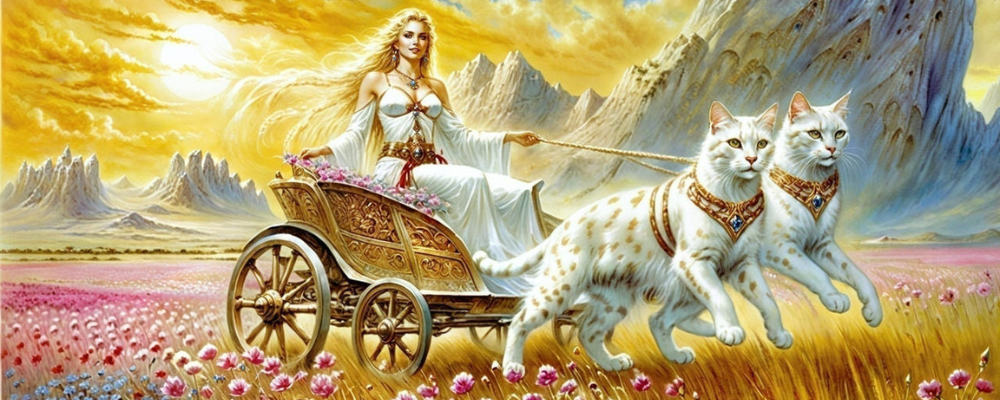
Freyja, the Norse goddess of love and beauty, is called the daughter of Njord and the Vanir’s consort, referring to her marriage to her brother Freyr that was dissolved when she arrived in Asgard.
She is also the rain of the eyes of Odr’s bedmate.
In Asgard she was forced to marry the god Odr, who often abandoned her to wander the world. This caused Freyja sorrow.
Her tears turned into gold when they touched land and amber when they touched water.
Hel, although technically a giant rather than a goddess, also had many kennings.
She is the only daughter of the chieftain Loki, referring to her parentage.
She is also the sister of the complete monster of a wolf (Fenrir).
Kennings for Thjazi
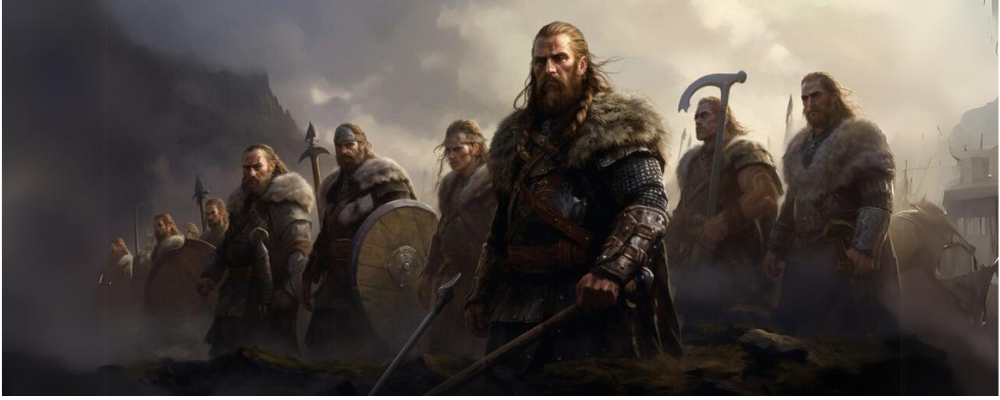
Kennings were not just for the gods.
The giant Thjazi was also known by various kennings.
He kidnapped the goddess Idun to acquire her apples of youth for himself and deprive the gods.
When Loki stole her back, Thjazi chased Loki in eagle form and was killed at the walls of Asgard.
For his desire for the apples he is called the hungry father of Morn and the cunning unyielding opponent of the gods.
The Father of Skadi. After Thjazi died, his daughter Skadi went to Asgard looking for vengeance.
Instead of fighting, she was invited to marry one of the gods and join their ranks.
The deeply wise seafull of the eave of the corpse-heap. A deeply-wise seagull is actually a raven or eagle, referring to Thjazi’s transformation, while the wave of the corpse-heap suggests blood, and the death of Thjazi.
He is also called the mountain wolf and the wolf of the woman, which is an unknown reference.
So is the killing-greedy swinging Rognir of killer whales.
Kennings for Loki
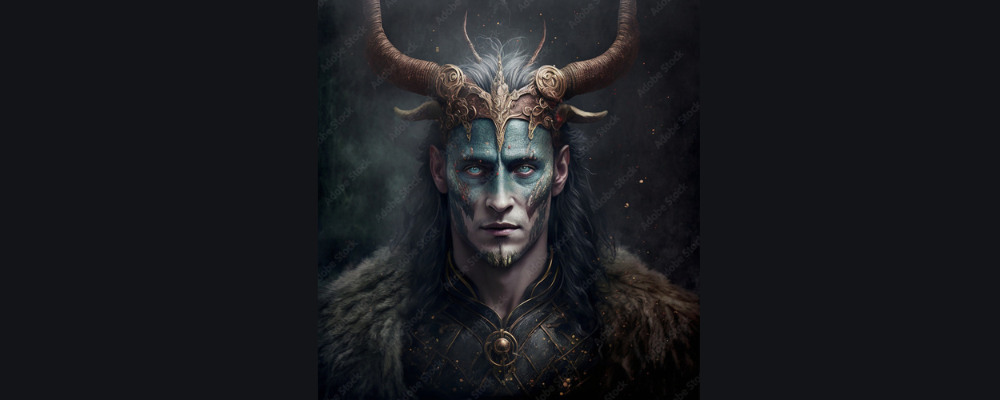
Of course, the trickster giant Loki that lives among the gods until he is thrown out for his role in the death of Balder has many kennings.
He is allowed to live in Asgard due to a blood brotherhood pact between himself and Odin. That is why he is the friend of the raven god.
He is the amazingly cunning son of Farbauti, an otherwise unknown giant.
He is the father of the wolf (Fenrir), the father of the sea-thread (Jormungandr), and the confidant of Thor, referring to the fact that Loki often accompanied him on his adventures.
The cargo of the arms of Sigyn. This refers to the imprisonment of Loki after his role in the death of Balder. He was chained to a rock and a venomous snake was hung over his head to drip poison painfully onto his skin.
His Aesir wife Sigyn stays with him and catches as much of the poison as she can in a bowl to spare Loki.
The tree of deceits seems like an appropriate kenning for the trickster, as is the by no means trustworthy mind-tester of the Gautr of host-thunder (Thor).
He is also the thought-trier of Hoenir but also the loyal friend of Hoenir, referring to a lost myth.
He is the girdle-thief of Brisingr, referring to another lost story, but Brisingamen was a necklace that belonged to Freyja.
